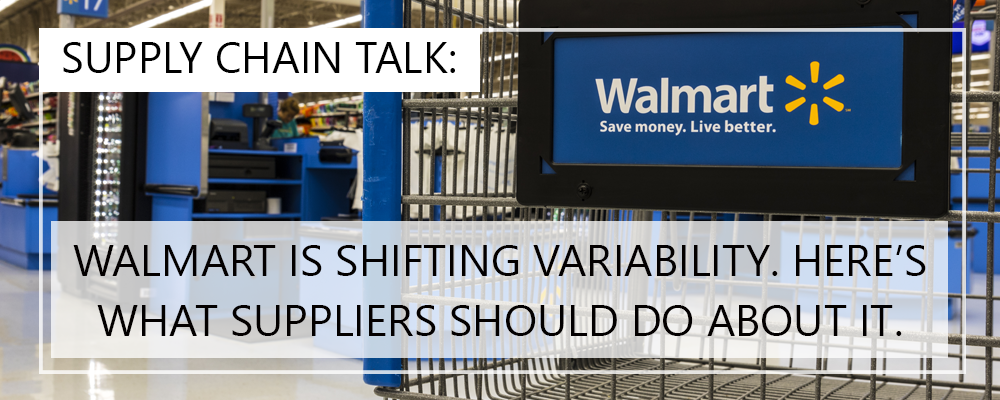Walmart recently announced that it will start fining its suppliers for early and late deliveries. This announcement, shifts market variability to suppliers. In this week’s ‘Supply Chain Talk,’ Arkieva CEO Harpal Singh discusses how suppliers can be better prepared to meet this change.
Visitors to Japan know all about the “kei” trucks. These little vans are used for everything from delivering pizza, to delivering parts for suppliers. The suppliers to some engine plants in Japan use these little trucks to deliver needed accessories, like alternators, just before they are required on the production line. Each delivery is usually just enough to keep the engine production line running for an hour or two. The delivery must be exactly on time; too early and there is no floor space to unload the truck; too late and the production line must stop.
Shifting the market variability burden to the supplier
Walmart wants to adopt the same approach for its fast-moving items. Starting in August, it will require some suppliers to deliver on the “must-arrive-by” date 75% of the time. Shifting costs and responsibility for buffer inventory is part of the longer-term trend in retailing. Retailers require more and more “shelf ready” packaging and display ready products. Increasingly, they consider their role as providing the infrastructure, space, and outlet for suppliers to sell their products, rather than the last step in getting products ready for the customer.
It would be nice if we could wish away variability. In Japan in the 80’s, the coffee shops around Toyota city were booming. This is where the Kei truck drivers killed time while waiting for the exact time to deliver the parts. Why were they there early? Well, traffic jams happen, and sometimes the “Kanban” signal did not quite identify the quantity correctly because the production line had a disruption or two. So, it was better to be safe than sorry. Keeping an extra truck or two at a coffee shop near the production facility kept everyone happy. Walmart suppliers must make the same tradeoff. Is it better to absorb the 3% fine for not delivering on time, or is it better to keep some extra stock nearby.
Just as in Japan, Walmart suppliers will likely in the short-term increase their inventory buffers to accommodate Walmart’s new rules. The hard part is the second step. How to focus on the underlying processes to identify and address variability. Kanban type of systems work well when there are little variability and flexible capacity. Suppliers to Walmart can no longer rely simply on the signal from the Walmart stores. They will need to look one step further into the customer’s demand for their product at Walmart to avoid the “bullwhip” effect. This, of course, means that the variability in the marketplace is no longer Walmart’s problem – it is theirs. With this comes the need to forecast (a word dreaded by Kanban proponents) the demand by Walmart’s customers.
[Read more: 5 Fundamentals for Building a Collaborative Supply Chain]
So, what is a supplier supposed to do?
- Increase Stock: suppliers should address the short-term issue of complying with the new rules by increasing their stock.
- Utilize Point-of Sales Data: make a proactive effort to access and utilize the point-of-sales data to provide a better demand signal.
- Setup New Distribution Centers: look at inventory positioning and potentially set up distribution centers to support Walmart’s policy. The bad news is that this is probably going to increase your costs in the short term. The good news is that it is a fine opportunity to rejigger the supply chain to minimize costs.
Enjoyed this post? Subscribe or follow Arkieva on Linkedin, Twitter, and Facebook for blog updates.






